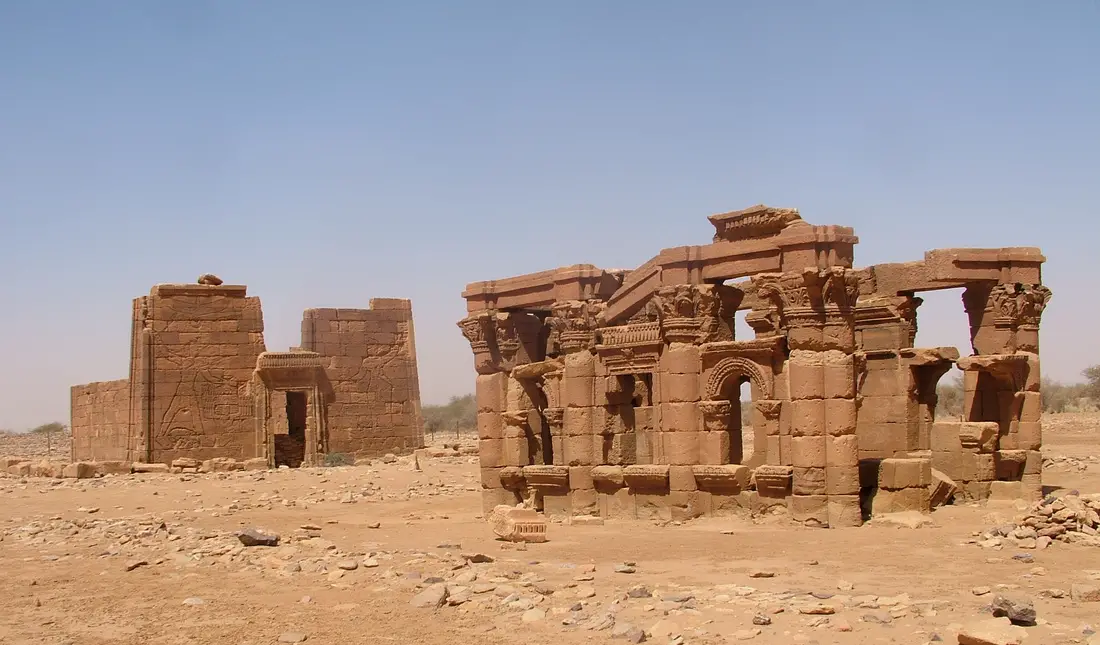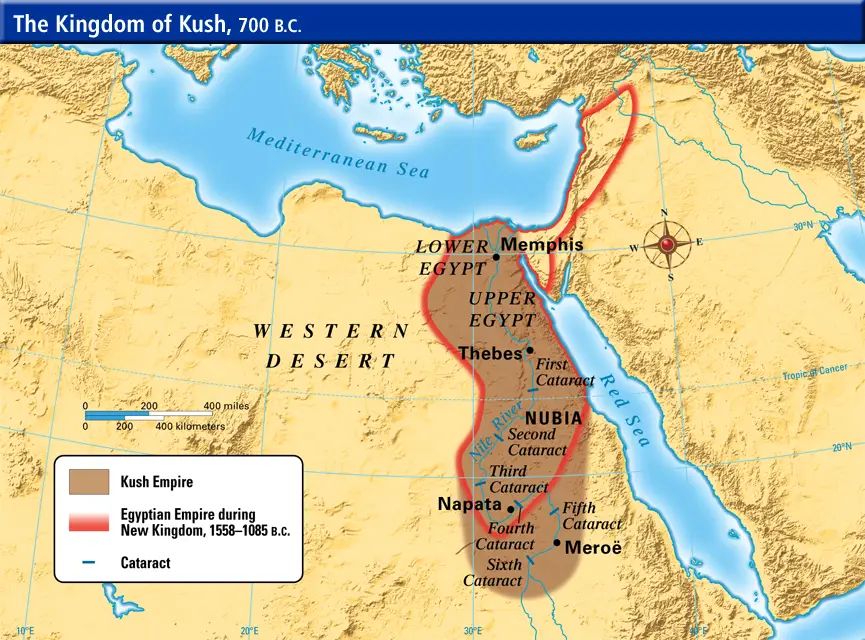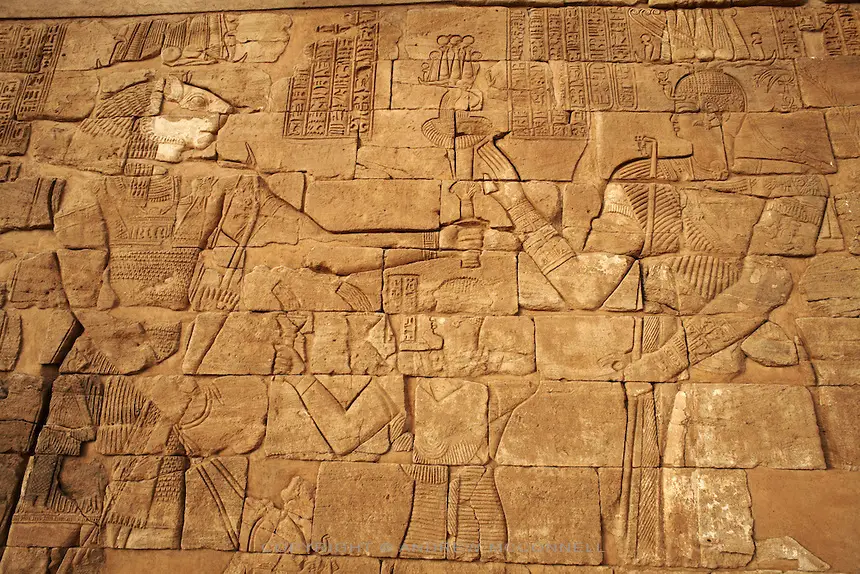The Ancient Kingdom of Kush
One of the earliest civilizations to develop in the Nile River Valley was Kush, a kingdom that ultimately controlled a large amount of land in what is now Sudan and ruled the Egyptian Empire for more than a century.
References to Kush are in writings of Ancient Egypt, Ancient Israel, and Ancient Rome. Some sources say that the Kushite civilization predated the Egyptian civilization. Kush had a rich supply of gold. For this reason, the Ancient Egyptians called the land south of Egypt “Nubia” (the Egyptian word for “gold”). Iron ore was also in abundance in Kushite lands. These two metals made Kush a wealthy civilization and a desirable trading partner. Kush traded with Egypt and with other kingdoms in Africa and with civilizations in the Middle East. Kushite gold and iron flowed through Egypt to other civilizations in the Mediterranean region. Ivory and animal skins, as well as pottery, flowed to and through Kush. Kush also enjoyed good soil for farming, without the necessary flooding on which Egypt had to depend. Kushite farmers did not grow all of the food that their civilization needed, however, and so Kushite traders often exchanged gold and iron for much-needed food and drink, including wine and olive oil from Greece and papyrus from Egypt.
Egyptian expansion southward culminated in the annexation of Kush by Thutmose I, about 1500 B.C. When Egypt’s New Kingdom collapsed, Kush rose up as a strong adversary and eventually conquered Egypt, in 775 B.C. Historians list this as the 25th Dynastry, and it lasted for more than 100 years. An Assyrian victory over Kushite forces in 656 B.C. resulted in a steep decline in Kushite influence, and Egypt regained its supremacy over its lands in 653 B.C. Egyptian forces invaded Kush in 591 B.C. and sacked Napata. Kush then moved its capital farther south, to Meroe. As did the Ancient Egyptians, the people of Kush mummified their dead and placed them in tombs. Many of these tombs were underneath pyramids. Some sources say that the tallest Kushite pyramid was built to honor the memory of a Kushite queen, Shanakdakheto. Sources list several queens among the ruling elite of Kush. Other sources say that the kings (and queens) enforced the laws but did not make them; that ability or privilege, sources say, was in the hands of the priests. Some sources say that the Kushite people had much more of an influence in the selection of leaders (of both the settlements and the civilization) and in the overall maintenance of the society than did the Ancient Egyptians.
Many sources say that an invasion from the Ethiopian kingdom of Axum precipitated the demise of Kush. Armed bands from other civilizations to the south repeated the Egyptian efforts from the north, and Kush was eventually squeezed between competing influences. About the same time, other civilizations accelerated a growing trend of bypassing Kush altogether in trading with Egypt and other Middle Eastern civilizations. Kush collapsed finally in the fourth century A.D. under the persistent attack of nomads from the south and the eastern lands. Also, the emerging Axum Kingdom in Ethiopia eclipsed the Kush Kingdom, razing then-capital Meroe, and contributed to its demise. |
|
Social Studies for Kids
copyright 2002–2025
David White



 Most of what is known about Kush comes from non-Kushite sources. The people of Kush had a form of written language, similar to Egyptian
Most of what is known about Kush comes from non-Kushite sources. The people of Kush had a form of written language, similar to Egyptian  The main settlements in Kush were Kerma, Meroe, and Napata. The capital was at Napata for many years, and that settlement was the prime trading center and major burial center for most of the history of Kush.
The main settlements in Kush were Kerma, Meroe, and Napata. The capital was at Napata for many years, and that settlement was the prime trading center and major burial center for most of the history of Kush. Wall paintings dotted the Kushite tomb interiors, and archaeological digs have found granite and bronze statues showing gods similar to Egypt but also some exclusive to Kush, including a three-headed lion.
Wall paintings dotted the Kushite tomb interiors, and archaeological digs have found granite and bronze statues showing gods similar to Egypt but also some exclusive to Kush, including a three-headed lion.
